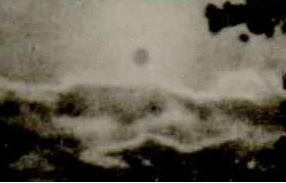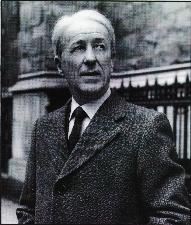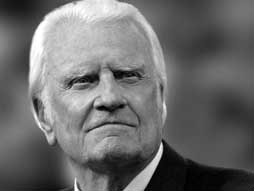“The tail of the devil is functioning in the disintegration of the Catholic world,” said Blessed Pope Paul VI on Oct. 13, 1977 in a formal address marking the 60th anniversary of the sixth and final Fatima apparition – the “Miracle of the Sun” – at Fatima, Portugal on Oct. 13, 1917. “The darkness of Satan has entered and spread throughout the Catholic Church even to its summit. Apostasy, the loss of the faith, is spreading throughout the world and into the highest levels within the Church.” Blessed Pope Paul VI’s remarks on Satan indwelling even the highest levels of the Catholic Church were reported on the following day – Oct. 14, 1977 – in the Milan-based daily Italian newspaper Corriere della Sera.
It was not the first time Blessed Pope Paul VI had sounded such a warning. More than five years earlier, in what is now known as his “Smoke of Satan” homily delivered on June 29, 1972 on the ninth anniversary of his coronation, the Pope gave the sermon that remains perhaps the most famous and most-argued about in terms of meaning sermons the Holy Father delivered during his 15-year-plus pontificate.
The are several difficulties in analyzing the homily, delivered by Blessed Pope Paul VI, as he celebrated the mass and the beginning of the tenth year of his pontificate as successor of Saint Peter, with 30 “porporati” (cardinals) present, including Lord Cardinal Amleto Giovanni Cicognani, dean of the sacred college; Lord Cardinal Luigi Traglia, the sub-dean; Archbishop Giovanni Benelli, substitute of the secretary of state; and Archbishop Agostino Casaroli, secretary of the council for the public affairs of the church.
The homily was delivered in Italian, so it must be faithfully translated into English for many analysts to tackle it.
The translation here was provided by Father Stephanos Pedrano, O.S.B., a Benedictine monk and priest at Prince of Peace Abbey, a Benedictine monastery founded in 1958 in Oceanside, California, near San Diego. Pedrano was educated at the International Benedictine Athenaeum of St. Anselm in Rome and is fluent in Italian and the translation was rendered in 2006 at the request of Jimmy Akin, the Texas-born self-described nominal Protestant, who converted to Catholicism in 1992, and is now the senior apologist at Catholic Answers, the El Cajon, California apostolate started in 1979 by attorney Karl Keating. You can read the English translation by Pedrano of the papal homily here from Akin’s Nov. 13, 2006 blog posting at http://jimmyakin.typepad.com/defensor_fidei/2006/11/the_smoke_of_sa.html
Aside from any translation challenges, Akin quite rightly points out the Vatican-issued Italian homily (http://www.vatican.va/holy_father/paul_vi/homilies/1972/documents/hf_p-vi_hom_19720629_it.html) is by no means a verbatim account of Blessed Pope Paul VI’s words that day, as we might expect in such a document today, but rather for the most part a “narrative summary” of the Holy Father’s homily by an anonymous narrator, although certain statements are attributed with quotation marks as direct quotes from the Pope, the most famous being “from some fissure the smoke of Satan has entered the temple of God.” Akin argues that even if the reporting is accurate, Blessed Pope Paul VI’s 1972 remark should not be interpreted as a literal assertion “claiming that there were Satanists in the Vatican,” but rather as symbolic representation of the “cultural crisis of the late 1960s and early 1970s” and secular influences among Catholics.
The enigmatic Malachi Martin had a more literal take, suggesting the Enthronement of the Fallen Archangel Lucifer occurred exactly nine years to the day earlier – on the day Blessed Pope Paul VI was coronated on June 29, 1963 – on the Solemnity of Saints Peter and Paul, as the Availing Time arrived.
In The Lion, The Witch, And The Wardrobe, the novel for children published in October 1950, the Anglican writer C.S. Lewis, one of the leading Christian apologists of the 20th century wrote, “There is no neutral ground in the universe. Every square inch, every split second, is claimed by God and counterclaimed by Satan.” Catholic writer Robert Hugh Benson, author of the 1907 apocalyptic and dystopian novel Lord of the World, (https://soundingsjohnbarker.wordpress.com/2014/09/04/spiritual-warfare/) , who has been quoted approvingly by Pope Francis, would have agreed with Lewis.
There is perhaps no more mysterious figure in the Catholic Church in the second half of the 20th century than Malachi Brendan Martin, born on July 23, 1921 in Ballylongford in County Kerry, Ireland, who we remember today mainly as a best-selling New York City writer of fiction and non-fiction, where in typical Martin style, the two genres were separated, if at all, by a very blurred line at times.
He was ordained a priest for the Society of Jesus (Jesuits) in 1954. Was he an insider at the Second Vatican Council from 1962, as peritus (expert advisor) for German Jesuit Cardinal Augustin Bea, or more accurately a somewhat lesser figure, albeit a highly skilled linguist, translator and Semitic paleographer? Did he act as a shadowy agent or advocate for certain Jewish interests during the council? Did he read the Third Secret of Fatima? Was he a liberal or a conservative? An agent provocateur? A double agent? Was he a valid exorcist? Secretly ordained a bishop by Pope Pius XII? Was he laicized at his own request by Blessed Pope Paul VI in 1965, or just given dispensation from his vows of poverty and obedience, but not chastity? Was he chaste or a serial womanizer who seduced a string of women, including Susan Kaiser in 1964, as alleged by former TIME magazine Vatican correspondent Robert Blair Kaiser in his 2002 book Clerical Error: A True Story, published three years after Martin’s death? And speaking of Martin’s death, even that is somewhat shrouded in mystery. Martin died of a cerebral hemorrhage on July 27, 1999 due to a fall in his apartment in Manhattan, four days after his 78th birthday. More than one conspiracy theorist has argued Martin was pushed by an unseen hand.
Martin first made his claim about the Enthronement of the Fallen Archangel Lucifer occurring on the day Blessed Pope Paul VI was coronated on June 29, 1963 – on the Solemnity of Saints Peter and Paul, as the Availing Time arrived – in his 1990 purportedly non-fiction work, The Keys of This Blood: Pope John Paul II Versus Russia and the West for Control of the New World Order, where he wrote St. Pope John Paul II came “up against the irremovable presence of a malign strength in his own Vatican and in certain bishops’ chanceries. It was what knowledgeable Churchmen called the ‘superforce.’ Rumors, always difficult to verify, tied its installation to the beginning of [Blessed] Pope Paul VI’s reign in 1963. Indeed Paul had alluded somberly to ‘the smoke of Satan which has entered the Sanctuary’. . . an oblique reference to an enthronement ceremony by Satanists in the Vatican.”
He revisited the theme in his 1996 blockbuster fictional novel, Wind Swept House, where Martin wrote at length near the opening of the book about it:
“The Enthronement of the Fallen Archangel Lucifer was effected within the Roman Catholic Citadel on June 29, 1963; a fitting date for the historic promise about to be fulfilled. As the principal agents of this Ceremonial well knew, Satanist tradition had long predicted that the Time of the Prince would be ushered in at the moment when a Pope would take the name of the Apostle Paul. That requirement – the signal that the Availing Time had begun – had been accomplished just eight days before with the election of the latest Peter-in-the-Line.
“There had barely been time since the papal conclave had ended for the complex arrangements to be readied; but the Supreme Tribunal had decided there could be no more perfect date for the Enthronement of the Prince than this feast day of rhe twin princes of the Citadel, SS. Peter and Paul. And there could be no more perfect place than the Chapel of St. Paul itself, situated as it was so near to the Apostolic Palace.
“The complexity of the arrangements were dictated mainly by the nature of the Ceremonial Event to be enacted. Security was so tight in the grouping of Vatican buildings within which this gem of a Chapel lay that the full panoply of the Ceremonial could not possibly escape detection here. If the aim was to be achieved – if the Ascent of the Prince was actually to be accomplished in the Availing Time – then every element of the Celebration of the Calvary Sacrifice must be turned on its head by the other and opposite Celebration. The sacred must be profaned. The profane must be adored. The unbloody representation of the Sacrifice of the Nameless Weakling on the Cross must be replaced by the supreme and bloody violation of the dignity of the Nameless One. Guilt must be accepted as innocence. Pain must give joy. Grace, repentance, pardon must all be drowned in an orgy of opposites. And it must all be done without mistakes. The sequence of events, the meaning of the words, the significance of the actions must all comprise the perfect enactment of sacrilege, the ultimate ritual of treachery. ”
You can also follow me on Twitter at: https://twitter.com/jwbarker22











